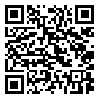BibTeX | RIS | EndNote | Medlars | ProCite | Reference Manager | RefWorks
Send citation to:
URL: http://hnmj.gums.ac.ir/article-1-677-en.html
2- Associate Professor, Cardiovascular Diseases Research Center, Department of Cardiology, Heshmat Hospital, School of Medicine, Guilan University of Medical Sciences, Rasht, Iran ,
3- Assistant Professor, Social Determinants of Health Research Center (SDHRC), Department of Nursing, School of Nursing and Midwifery, Guilan University of Medical Sciences, Rasht, Iran
4- Associate Professor, Department of Occupational Health, Research Center of Health and Environment, School of Health, Guilan University of Medical Sciences, Rasht, Iran
Introduction: Medical errors are among significant health system problems. The best method to detect errors is to identify the root and systemic causes of errors.
Objective: This study aimed to investigate the failures of clinical care in emergency departments using the Healthcare Failure Modes and Effects Analysis (HFMEA).
Materials and Methods: This was an analytical and cross-sectional study. The required data were collected qualitatively and quantitatively using focus group discussions in emergency departments. The study population consisted of all emergency department nurses. Study samples were selected by purposive sampling technique. By the HFMEA method, Risk Priority Number (RPN) was calculated to reach failure modes and those with RPN>216 were identified as the most frequent and risky errors.
Results: A total number of 67 failure modes were identified for 26 clinical care processes.The errors with the highest RPN were “the lack of oxygenation during airway suctioning” and “the lack of airway suctioning during ventilator weaning process”; they related to the respiratory system care with RPN=336. The error with the lowest RPN was “the lack of signing verbal orders by two nurses”; related to the general practice with RPN=8.
Conclusion: Investigating the causes and effects of these errors, controlling, and suggesting measures indicate the high efficiency of the HFMEA method. It also suggested the preventability of these errors by increasing the knowledge and awareness of the training staff by providing training courses.
Received: 2019/10/25 | Accepted: 2019/11/28 | Published: 2020/01/1
| Rights and permissions | |
 | This work is licensed under a Creative Commons Attribution-NonCommercial 4.0 International License. |






